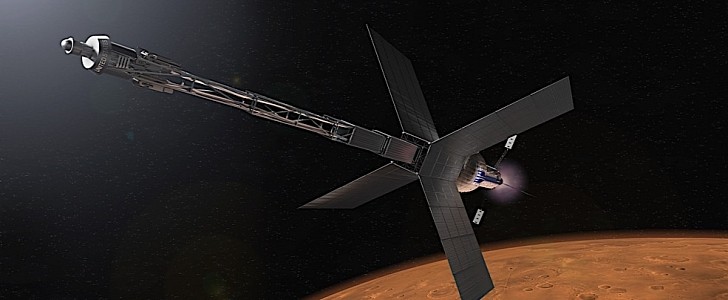Despite all the bad things going on around us, humanity is currently engaged in a space exploration effort the likes of which the world has never seen. Spearheaded, like most other things, by the U.S., the revived space race will see humans land on the Moon three years from now, and possibly on Mars in the early years of the next decade.
For all those plans to fall into place, a lot of things have to happen, including the development of new technologies. NASA is already in bed with several private contractors for the exploitation of the International Space Station, and is planning the Artemis program with them. Still, backup of a more official nature is also needed.
In mid-December, the U.S. got behind these ambitious space exploration plans as (still) President Donald Trump issued Space Policy Directive-6 (SPD-6), opening the doors for future spacecraft to use nuclear power.
Theoretically, SPD-6 “establishes high-level goals, principles, roles and responsibilities, and a supporting roadmap demonstrating the nation's commitment to the safe, effective and responsible use of space nuclear power and propulsion (SNPP) systems.”
Practically, it opens the doors for the American space agency to “mature and then demonstrate a fission surface power system on the Moon,” but also to look into ways of using nuclear power for the planned crewed mission to Mars.
The lunar power system will be developed together with the Department of Energy and other industry players and should be a 10-kilowatt system. The plan is to have it ready by the end of the decade. As for such a solution for the Martian spaceships, it is too early for any details to be available yet.
“NASA strongly supports the White House’s continued leadership on the agency’s Artemis program, which includes landing the first woman and next man on the Moon in 2024. At the Moon we will prepare for new science and human missions deeper into the solar system,” said in a statement NASA Administrator Jim Bridenstine.
“SPD-6 bolsters the agency’s efforts to develop affordable, safe, and reliable nuclear systems, including technology capable of continuously powering operations on other worlds and propelling future human missions to Mars.”
You can have a look at all the provisions of SPD-6 by following this link.
In mid-December, the U.S. got behind these ambitious space exploration plans as (still) President Donald Trump issued Space Policy Directive-6 (SPD-6), opening the doors for future spacecraft to use nuclear power.
Theoretically, SPD-6 “establishes high-level goals, principles, roles and responsibilities, and a supporting roadmap demonstrating the nation's commitment to the safe, effective and responsible use of space nuclear power and propulsion (SNPP) systems.”
Practically, it opens the doors for the American space agency to “mature and then demonstrate a fission surface power system on the Moon,” but also to look into ways of using nuclear power for the planned crewed mission to Mars.
The lunar power system will be developed together with the Department of Energy and other industry players and should be a 10-kilowatt system. The plan is to have it ready by the end of the decade. As for such a solution for the Martian spaceships, it is too early for any details to be available yet.
“NASA strongly supports the White House’s continued leadership on the agency’s Artemis program, which includes landing the first woman and next man on the Moon in 2024. At the Moon we will prepare for new science and human missions deeper into the solar system,” said in a statement NASA Administrator Jim Bridenstine.
“SPD-6 bolsters the agency’s efforts to develop affordable, safe, and reliable nuclear systems, including technology capable of continuously powering operations on other worlds and propelling future human missions to Mars.”
You can have a look at all the provisions of SPD-6 by following this link.

